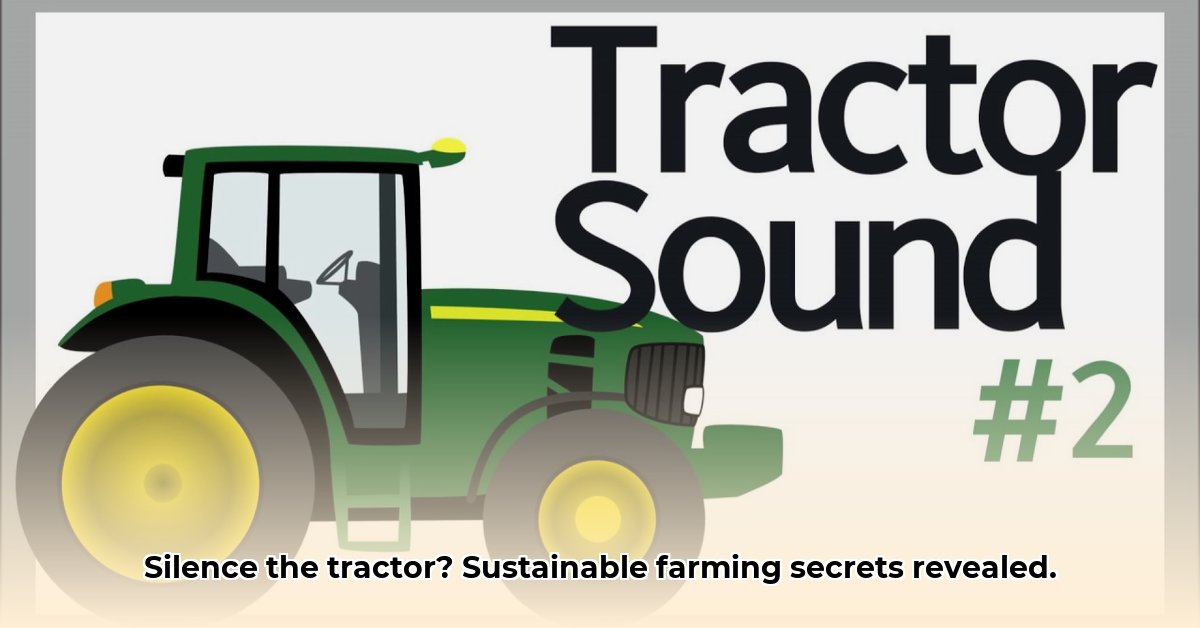
Tractor Noise: The Unexpected Soundtrack of Sustainable Farming
The rumbling of a tractor, a quintessential farm sound, is undergoing a digital metamorphosis. A surprising trend has emerged: the surge in popularity of royalty-free tractor engine sound effects online. This isn't merely a quirky phenomenon; it reflects a broader movement towards leveraging technology for more sustainable and efficient farming practices. From virtual reality farmer training to engaging educational programs and impactful marketing campaigns, the humble tractor sound is finding new applications. But are these digital sounds truly benefiting the agricultural sector? This article investigates the economic and environmental implications of this seemingly minor detail. For more on tractor maintenance, check out this helpful resource: Tractor Servicing.
The Growing World of Digital Tractor Sounds
The readily available library of tractor sounds online indicates a significant shift within agricultural technology. These digital assets are increasingly incorporated into farm simulations, training materials, and public awareness campaigns promoting sustainable practices. However, a critical knowledge gap exists. Concrete evidence linking these digital sounds to tangible improvements in farm efficiency or farmer training remains scarce. How exactly are these sounds making a difference? Further research is needed to answer this key question.
The Importance of High-Quality Tractor Sounds
The quality of these digital sounds significantly varies. High-fidelity recordings are crucial for creating realistic simulations and immersive training experiences. Lower-quality sounds might suffice for less demanding applications, but the impact on effectiveness is significant. This quality variation directly affects the cost. The prevalence of royalty-free options suggests a strong preference for cost-effective solutions, a pragmatic approach, especially for smaller farming operations.
Who's Using These Sounds, and How?
The benefits of digital tractor sounds extend across various stakeholders:
| Stakeholder | Immediate Benefits | Potential Long-Term Impacts |
|---|---|---|
| Agricultural Tech Companies | Enhanced realism and engagement in simulation software. | Data-driven metrics demonstrating improved training and simulation effectiveness, thus increasing ROI. |
| Educators and Trainers | More interactive and engaging online learning modules. | Creation of immersive virtual and augmented reality (VR/AR) training programs using realistic agricultural soundscapes. |
| Marketing and Public Relations | More effective and memorable sustainability campaigns. | Compelling storytelling about sustainable technology using carefully selected tractor sounds. |
| Farmers | Potential improvements to safety procedures and operational efficiency through sound analysis. | Utilization of sound data for predictive maintenance of farm equipment; reducing downtime and unexpected repairs. |
Challenges and Risks in Using Digital Tractor Sounds
Several challenges hinder the widespread adoption of digital tractor sounds. Overreliance on free sound libraries might compromise quality and variety. A lack of standardized sound quality also presents a significant obstacle. Clear guidelines and benchmarks would improve the overall efficacy and consistency of these resources. However, the most significant challenge is the absence of robust data demonstrating a clear return on investment (ROI). More rigorous research is necessary to justify widespread adoption.
Legal and Regulatory Considerations
While using royalty-free sounds generally poses minimal legal risks (assuming proper attribution), the evolving technological landscape introduces data privacy and safety concerns. For example, the use of sound data for machine monitoring necessitates strict adherence to relevant data privacy and safety regulations. Staying informed about evolving laws and regulations is crucial.
The Future of Tractor Sounds in Sustainable Agriculture
The application of digital tractor sounds is still nascent, yet its potential is substantial. Imagine a future where immersive training simulations using realistic soundscapes become standard practice or where sound data predicts equipment malfunctions, minimizing costly repairs. Continued research and data collection are critical for unlocking the true potential of these sounds in sustainable farming. These sounds are not merely auditory elements but indicators of a transformative technological and economic shift within agriculture.
How to Measure ROI of Tractor Sound Effects in Sustainable Agriculture Training
Key Takeaways:
- High tractor noise levels negatively impact farmer hearing health and overall well-being.
- Investing in noise reduction technologies offers long-term benefits, reducing healthcare costs and improving worker productivity.
- Effective training programs incorporating sound effects enhance noise awareness and safe practices.
- Measuring ROI necessitates tracking multiple metrics, including hearing loss rates, worker compensation claims, and training program participation levels.
- A comprehensive approach involving machinery enhancements, training, and regulatory changes is essential for sustainable solutions.
The Deafening Truth: Tractor Noise and its Impact
Tractor noise isn't merely an annoyance; it's a significant occupational hazard. Prolonged exposure leads to hearing loss, diminishing farmers' quality of life. However, this problem presents an opportunity for innovation and improvement.
Sustainable Solutions: Quieter Tractors, Healthier Farmers
Agricultural technology companies are developing quieter tractors, benefiting both the environment and worker safety. Noise reduction translates to lower healthcare costs and increased worker productivity.
Training the Future: The Power of Sound Effects
Measuring the ROI of tractor sound effects in sustainable agriculture training begins with effective training programs. Realistic sound effects in training simulations enable farmers to identify dangerous noise levels and practice safe work habits. This proactive approach mitigates the long-term impact of noise exposure.
Measuring the Return: Quantifying the Benefits
Quantifying the benefits requires monitoring several key indicators:
- Reduced healthcare costs: Track claims related to noise-induced hearing loss. A decline in these claims directly reflects ROI.
- Improved worker productivity: Assess worker output and absenteeism. Reduced time off due to hearing problems equates to increased productivity.
- Training effectiveness: Evaluate participant engagement and knowledge retention. Effective training promotes safer practices and minimizes workplace injuries.
- Compliance with regulations: The costs associated with compliance and fines can be minimized by implementing noise reduction strategies.
A comprehensive cost-benefit analysis comparing the investment in noise reduction with subsequent savings provides a clear justification for such investments.
The Bigger Picture: A Multi-Faceted Strategy
Addressing tractor noise necessitates a holistic approach: technological advancements in quieter machinery, comprehensive training programs utilizing realistic noise simulations, and supportive government policies. This strategy creates a sustainable and healthier farming future.